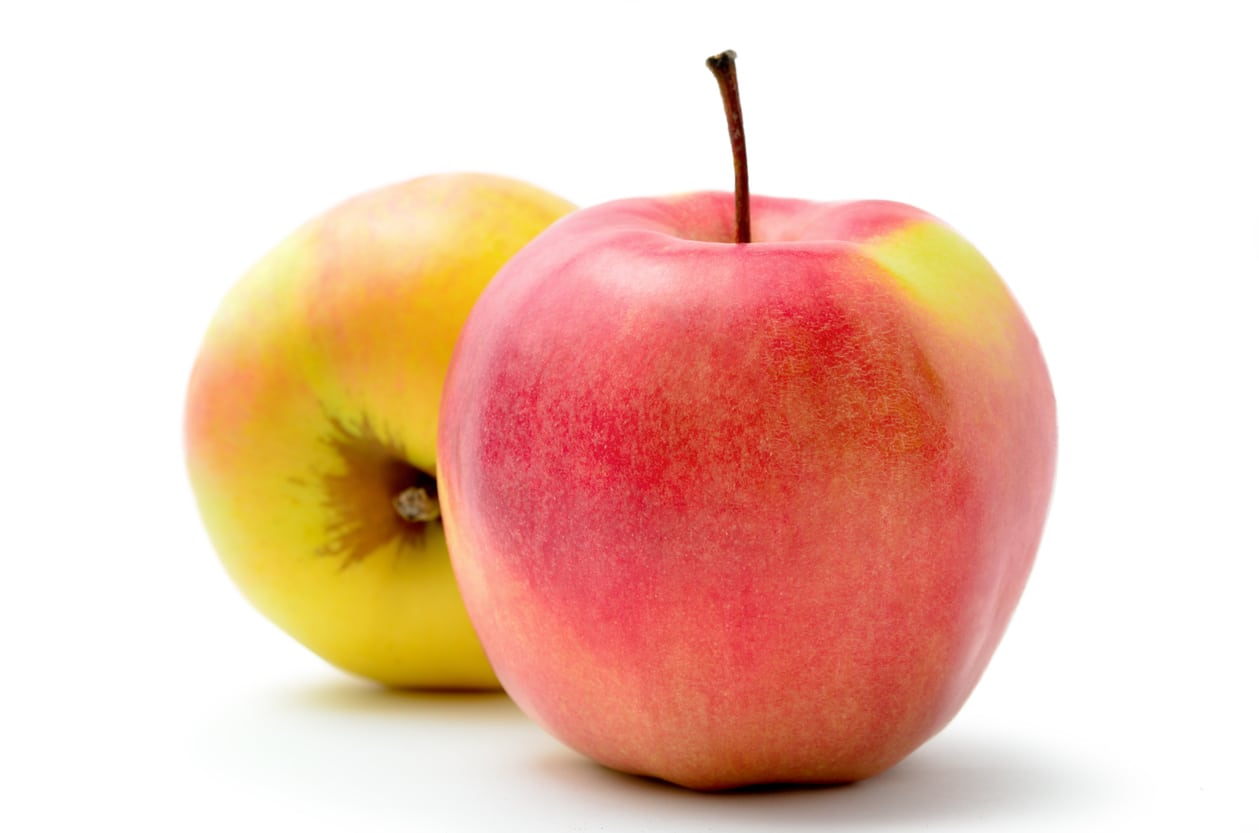Jonagold Apple Info – How To Grow Jonagold Apples At Home

Jonagold apple trees are a cultivar that have been around for a while (introduced in 1953) and have stood the test of time by still being a great choice for the apple grower. Interested in learning how to grow Jonagold apples? Read on for Jonagold apple info regarding growing Jonagold apples and Jonagold uses.
What are Jonagold Apple Trees?
Jonagold apples, as their name suggests, are derived from Jonathan and Golden Delicious cultivars, inheriting many of the best qualities from their parents. They are super crisp, large, yellow/green apples blushed in red, with creamy, white flesh and both the tartness of a Jonathan and the sweetness of a Golden Delicious. Jonagold apples were developed by Cornell’s apple breeding program at the New York State Agricultural Experiment Station in Geneva, New York in 1953 and introduced in 1968.
Jonagold Apple Info
Jonagold apples are available as both semi-dwarf and dwarf cultivars. Semi-dwarf Jonagolds attain heights of between 12-15 feet (3.5-4.5 m.) tall by the same distance across, while the dwarf variety only reaches 8-10 feet (2.5-3 m.) in height and again the same distance wide. These mid-late season apples ripen and are ready for harvest in about mid-September. They can be stored for up to 10 months in the refrigerator, although they are best eaten within two months of harvest. This cultivar is self-sterile, so when growing a Jonagold, you will need another apple such as a Jonathan or Golden Delicious to aid in pollination. Jonagolds are not recommended for use as pollinators.
How to Grow Jonagold Apples
Jongolds can be grown in USDA zones 5-8. Select a site with well-drained, rich, loamy soil with a pH of 6.5-7.0 in full to partial sun exposure. Plan to plant the Jonagold in mid-autumn. Dig a hole that is twice as wide as the rootball of the tree and slightly shallower. Gently loosen the rootball. Making sure the tree is vertical in the hole, back fill with the removed soil, patting down the soil to remove any air pockets. If planting multiple trees, space them 10-12 feet (3-4 m.) apart. Water the trees in well, saturating the ground completely. Thereafter, water the tree deeply each week but allow the soil to dry completely between watering. To retain water and retard weeds, apply 2-3 inches (5-7.5 cm.) of organic mulch around the tree, taking care to leave a 6- to 8-inch (15-20.5 cm.) ring devoid of any mulch near the trunk.
Jonagold Uses
Commercially, Jonagolds are grown for the fresh market and for processing. With their sweet/tart flavor, they are delicious eaten fresh out of hand or made into applesauce, pies, or cobblers.
Sign up for the Gardening Know How newsletter today and receive a free copy of our e-book "How to Grow Delicious Tomatoes".

Amy Grant has been gardening for 30 years and writing for 15. A professional chef and caterer, Amy's area of expertise is culinary gardening.
